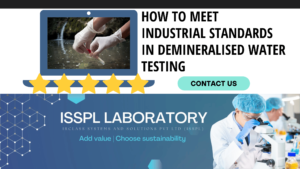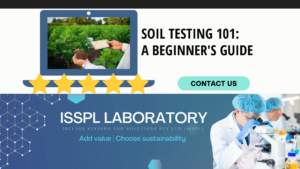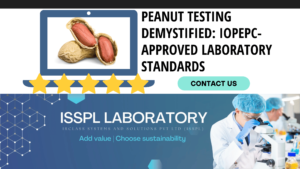An Overview by Team ISSPL - Analytical Testing Laboratory in India
ToggleCleanrooms offer new-age companies tailor-made solutions in an optimally performing setup. It brings an apt choice for the specific operational environments to help meet the maximum manufacturing standards. The classic definition of a clean room could be a well-defined space where the concentration of airborne particles is monitored correctly. It is a well-defined space with classified particles.
ISO and Clean room validation – There are 9 ISO classifications. It includes – ISO 1, ISO 2, ISO 3, ISO 4, ISO 5, ISO 6, ISO 7, ISO 8, and ISO 9. The cleanest ISO classification is the ISO 1 framework. In contrast, ISO 9 is the dirtiest among the rest. The ISO 14644 standard defines the products and processes getting benefitted through the contamination control steps. It includes industries including –
- Aerospace
- Microelectronics
- Optics
- Nuclear and life sciences
- Pharmaceuticals – medical devices, food, and healthcare.
The purpose of cleanroom validation – Understanding it rightly
The clean room certification is more than just a passing test. It is an industrial validation and plays a critical part. It allows the appropriate facility to operate optimally and ensure the best productivity. Simply put, clean room validation concerns quality control. The validation can review and ensure the following –
- Assure optimal purity and sterility for pharmaceutical products or food-based items.
- Safeguarding the damage possibilities to sensitive electronics via restricting exposure to particulates
- Providing the best solution for a reliable test or experimental reports, thereby preventing the chances of external contamination of the samples
Facility owners can ensure the best compliance with the specific standardization framework. In many cases, cleanroom compliance emerges as a critical factor in a business. It is concerned with the reputation and profitability of the business. Any specialist clean room services company can demonstrate and help you recognize the significance of compliance. It is more than just giving an approval stamp. The facility owners can maintain optimal cleanliness. Simply put, the purpose of cleanroom validation is therefore part of an extensive process of –
- Monitoring
- Testing
- Maintenance
Factors that play a part – Practically speaking, there is more than one factor that plays a part. The influencing factors determine the premium standard of cleanliness, essential for any specific cleanroom. It can include –
- Different industrial regulatory bodies can impose industry-specific requirements. For instance, it can be MHRA for medical applications, based on specific requirements. In these cases, the clean room validation offers a dual purpose. It helps maintain the MHRA approval and simultaneously assures the facility owners about the performance levels.
- Apart from industrial regulatory bodies and their imposed necessities, customer requirements play critical parts. Why? Because it is part of ensuring the quality of the supply chain. A customer may review the clean room validation and test results. It enhances the customer and supplier relationship.
- There are specific processes carried out in the clean room, based on the levels of cleanliness. For instance, the blow and fill or seal technology is integral for aseptic pharmaceutical packaging facility centers.
- The internal quality standards for localized risk assessment processes also make a difference. It helps gain a competitive advantage, ensuring higher product purity and reliability.
Why does a business need it?
The conventional steps of clean room validation can detect and recognize the sources of any harmful contamination possibilities. Also, it assures compliance with the regulatory bodies and clients. One can ensure that the well-controlled environment meets the needs of the ISO Class parameters.
Simply put, it ensures optimal protection for the critical processes in the facility center. If a clean room does not exhibit or hold a current validation certificate, it would not be the best choice. Why? Because it needs to prove compliance with the particle concentration limits defined in ISO 14644-1:2015. However, the environment, scope, and frequency of the validations could be defined by the type of operation and specific risks related to the business. The validation and evaluation interval also varies. The interval has to be appropriate, avoiding the high maintenance costs and loss of operational time.
The apt time interval for validation – Ensuring optimal efficiency for clean room validation enhances your business process. It necessitates the best interval and evaluation span, ensuring end-to-end compliance with ISO 14644-1:2015 and more. The classification and monitoring of air cleanliness by particles are connected to performance. It is critical to meet the risk assessment needs and monitoring strategies, determining the apt frequency for testing and validating the individual processes.
Read on and figure out the benefits of cleanroom validation and certification –
Benefit 1 – Better industry compliance
The foremost reason to carry out the apt requirements for clean room validation is to comply with industry standards. The unique industrial norms need to be adhered to, ensuring cleanroom validation and certification. These standards get imposed by the industries, customers, regulatory bodies, or the Government. The norms could be global or contain local variations. Hence, it is essential to meet the needs and ensure optimal compliance, earning better industrial status.
Benefit 2 – Better brand marketing
The controlling techniques and features of contaminants and other environmental factors are essential for increasing the efficiency, accuracy, and life cycle of multiple components. Investing resources in cleanroom technology enhances product ranking as well. How? Because it exhibits better branding. In the long run, it gives a clarified overview of the optimal practices and compliance status to the potential customers. They can stay assured of the best possible product or service. Clean rooms also facilitate technological features and medical innovation. Researchers need to control more than one environmental factor making it apt for the research purpose.
How does it work?
One can find professional resources who can meet the customized validation procedures fitting the specific requirements. The different types of cleanroom testing include –
- Airborne particle concentrations and particle counting
- Pressure differential
- Airflow velocity and volume
- Recovery rate
- Filter leak testing
Ease the needs with experts and authentic lab reports.
For trusted lab reports and testing facilities, get an end-to-end solution with IRCLASS Systems and Solutions Pvt Ltd (ISSPL) laboratory. Ease the requirements with efficient testing facilities and expert solutions.







